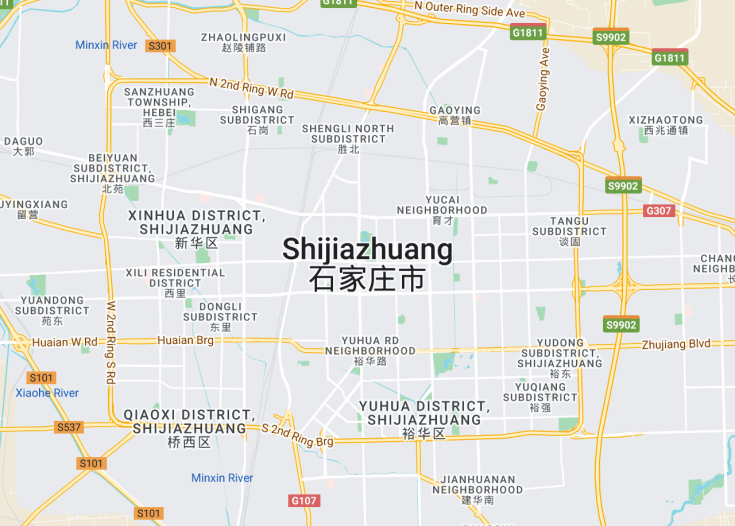Shijiazhuang, the capital of Hebei Province in China, presents a unique blend of history, culture, and modernity. This dynamic city offers an insightful peek into China’s rapid development while retaining aspects of its rich historical past. Highlights include the enchanting Zhaozhou Bridge, the oldest standing arch bridge in the world, and the captivating Pilu Abbey. Shijiazhuang’s proximity to the Taihang Mountains provides a scenic backdrop and opportunities for outdoor activities. Its vibrant local cuisine and bustling markets further enrich the travel experience, making Shijiazhuang a compelling destination for those eager to explore beyond China’s typical tourist routes.
Ensure to visit during spring or autumn to enjoy Shijiazhuang’s attractions comfortably, avoiding the extremities of its continental climate.
Consider a guided tour to fully appreciate the historical significance of sites like the Zhaozhou Bridge and Pilu Abbey.
Top things to do & see in Shijiazhuang
Select the following sights and activities to discover best tickets and tours available in Shijiazhuang.
Shijiazhuang: A Hub of Culture and History
| Country | China |
| Time in Shijiazhuang | GMT+8 |
| Language spoken | Mandarin |
| Population | 11,000,000 (Source: Worldometer, 2023) |
| Currency | Chinese Yuan (¥ / CNY) |
| Airports |
|
Shijiazhuang, the capital of Hebei Province in China, serves as a significant historical and economic center. With a rich history dating back over 1,000 years, this city offers a blend of ancient cultural sites with modern development. It’s well-known for its beautiful landscapes, including the Mount Cangyan and Xibaipo, a significant village during the revolution. As a major transportation hub, Shijiazhuang boasts extensive rail connections and robust industrial sectors, particularly in pharmaceuticals and textiles.
Where is Shijiazhuang?
Located in the heart of Hebei Province, Shijiazhuang is strategically nestled at the foothills of the Taihang Mountains, connecting the North China Plain.
Distances:
| Route | Distance by car | Time by car |
|---|---|---|
| Beijing to Shijiazhuang | 166 miles (267 km) | approximately 3 hours |
| Tianjin to Shijiazhuang | 188 miles (303 km) | approximately 3 hours, 20 minutes |
| Zhengzhou to Shijiazhuang | 250 miles (402 km) | approximately 4 hours, 15 minutes |
What is Shijiazhuang famous for?
Shijiazhuang is renowned for its rich revolutionary history and natural beauty, prominently featuring sites like Zhengding and locations of significant historical events.
History
Pre-20th Century
Shijiazhuang, the capital of Hebei province in China, has a rich history that dates back several millennia, although it was not always a significant urban center. The area around Shijiazhuang was historically populated by nomadic tribes, with scattered farming communities. Evidence suggests that during the Warring States period, this region played a modest part in the sprawling Chinese civilizations centered further east. It was not until the Han Dynasty that the settlements began to stabilize and grow as agriculture flourished in the fertile plains of North China.
1900-1949
Shijiazhuang began to evolve more notably during the early 20th century, especially after becoming a station on the Beijing-Guangzhou Railway in 1903. This development turned it into an important transportation hub. During the Japanese occupation in World War II, the city served as a logistics base. Post-war, this strategic importance continued during the Chinese Civil War, serving as a key military and supply center.
1949-Present
Following the founding of the People’s Republic of China in 1949, Shijiazhuang was selected as the capital of Hebei province, which led to a rapid period of industrialization and urbanization. This transformed it from a moderate-sized town into a large city. Today, Shijiazhuang is a significant industrial center, known for its pharmaceuticals, textiles, and as a transport and economic hub. Moreover, it is witnessing a growing importance in technology and education, housing numerous higher education institutions and research centers.
Visit Shijiazhuang
What to see and do in Shijiazhuang
Shijiazhuang offers a mix of historical sites, parks, and cultural experiences that cater to various interests. The city’s top attractions include the Zhaozhou Bridge, an ancient stone arch bridge and a marvel of Chinese engineering.
For museum enthusiasts, the Hebei Provincial Museum provides insights into the region’s rich history and cultural heritage. Nature lovers can visit the Xibaipo, a serene park that also serves as a memorial for revolutionary history. For a day out with family or friends, the Shijiazhuang Zoo and Botanical Garden offer a pleasant escape amidst nature and wildlife.
Festivals and Events in Shijiazhuang
Shijiazhuang hosts several cultural and modern events throughout the year. The Spring Festival, marking the Chinese New Year, is vibrantly celebrated with fireworks, dragon dances, and special local delicacies.
Another significant event is the Mid-Autumn Festival, where residents enjoy moon cakes and admire the full moon. These events usually fall between January or February and September or October, respectively, based on the lunar calendar.
Best time to visit Shijiazhuang
The best time to visit Shijiazhuang is during spring (April and May) and autumn (September and October). These months offer pleasant weather, ideal for exploring outdoor attractions and participating in local festivals.
Is Shijiazhuang worth visiting?
Shijiazhuang, though not as well-known as Beijing or Shanghai, offers a distinctive blend of historical heritage and modern Chinese culture, making it a worthwhile destination for those interested in exploring beyond the typical tourist paths. However, visitors should be prepared for its relatively industrial atmosphere which might not appeal to everyone.
The city’s convenient transportation links also make it an excellent starting point for exploring other parts of Hebei province or northern China. Whether for its cultural depth or strategic location, Shijiazhuang is a city that promises an enriching experience albeit with a few industrial facets.









